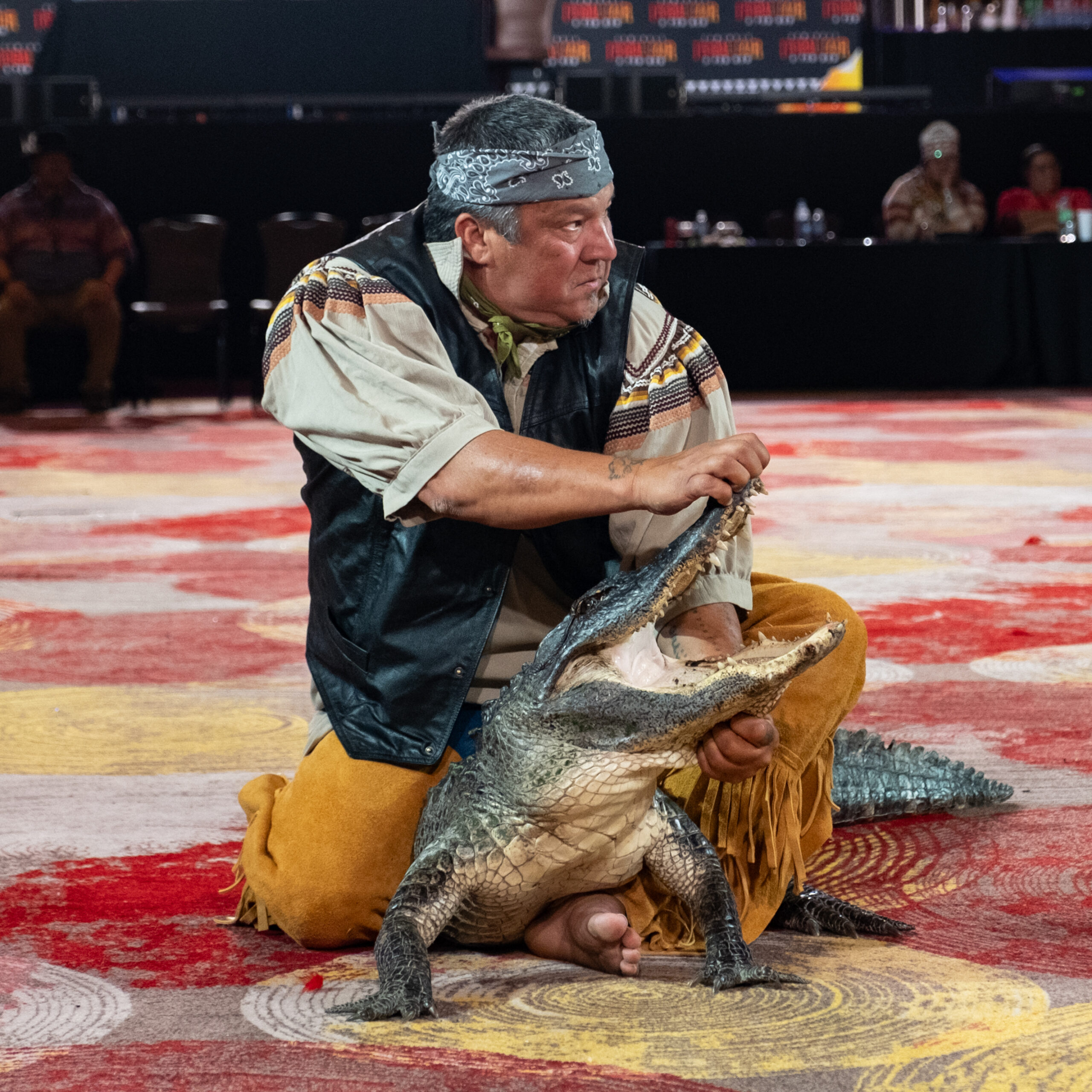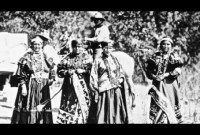
The Unyielding Embrace: Seminole Alligator Wrestling as a Tapestry of Culture, Danger, and Survival
The air in the Florida Everglades hangs thick and humid, a living breath of sawgrass and cypress. The sun, a relentless eye, beats down on a scene as old as the swamps themselves, yet perpetually on the knife-edge of modernity. Here, amidst the primeval beauty, a primal drama unfolds: Seminole alligator wrestling. More than a spectacle, it is a visceral connection to a bygone era, a living testament to indigenous resilience, and a dangerous dance between man and beast that echoes the very heartbeat of a unique culture.
For the uninitiated, the sight is breathtaking, almost unbelievable. A lone Seminole man, often clad in traditional patchwork attire, steps into an arena with a creature that embodies ancient power – an American alligator, weighing hundreds of pounds, armed with a bite force capable of crushing bone. There are no nets, no tranquilizers, just bare hands, a keen mind, and generations of inherited knowledge. This isn’t merely entertainment; it is a profound performance of skill, respect, and a deep-seated cultural identity forged in the unforgiving crucible of the Florida wilderness.

The origins of alligator wrestling among the Seminole people are rooted in necessity and survival. Before it became a tourist attraction, the alligator was a vital resource. Its meat provided sustenance, its hide was used for clothing and tools, and its very presence in the swamp taught the Seminole lessons in patience, observation, and respect for the natural world. Early interactions with alligators were often for hunting, but the Seminole’s profound understanding of the animal’s behavior eventually led to techniques for capturing them alive, often to relocate them or to demonstrate their mastery over the challenging environment.
"Our ancestors didn’t wrestle gators for show," explains Moses Jumper Jr., a respected Seminole elder and former alligator wrestler, in a recorded interview. "They did it to survive, to learn, to understand the spirit of the swamp. It was a way of showing respect, not dominance, by knowing their movements, their power."
The transition from a practical skill to a public performance began in the early 20th century. Displaced and dispossessed of their ancestral lands, the Seminole people, often referred to as the "Unconquered" for never formally signing a peace treaty with the U.S. government, sought new ways to sustain their communities. The burgeoning tourism industry in Florida offered an unexpected avenue. Alligator wrestling, with its thrilling display of courage and skill, proved to be an irresistible draw for curious visitors seeking an authentic glimpse into the "wild" Florida.
Pioneers like the legendary Billy Bowlegs III, a grandson of the famous Seminole chief, and later, figures like Henry Coacoochee and the Tigertail family, became the early stars of these nascent attractions. They performed in makeshift arenas, often at roadside camps, showcasing a tradition that captivated audiences. These shows, while seemingly just entertainment, were vital economic lifelines, allowing the Seminole to maintain their independence and cultural continuity in the face of immense pressure.
The act itself is a delicate ballet of danger. A typical wrestling demonstration begins with the wrestler approaching the alligator, often from behind, to avoid its powerful tail. The goal is to subdue the animal without harming it. This is achieved through a series of precise, almost ritualistic movements. One common technique involves carefully approaching the gator’s head, then quickly clamping its jaws shut and holding them closed with a hand or foot. The wrestler might then "roll" the gator onto its back, a position that induces a state of temporary torpor, making the animal less aggressive.
Once the gator is on its back, the wrestler can perform the famous "Florida smile," where they open the gator’s jaws, often inserting their own head into the mouth for a dramatic pose. This maneuver, while visually stunning and terrifying, is performed with the utmost care, relying on the gator’s momentary state of docility and the wrestler’s intimate knowledge of its anatomy. Every movement is calculated, every touch deliberate. A single misstep, a moment of hesitation, can lead to severe injury, or worse. Alligator bites are notoriously brutal, with incredible crushing power and a high risk of infection.
"You have to be calm. You have to be patient," explains James Holt, a Seminole alligator wrestler who has performed for decades. "The gator senses fear. It senses your intentions. It’s not about fighting them, it’s about moving with them, understanding their rhythm. It’s a connection, almost spiritual, between you and the ancient spirit of the swamp."
Beyond the raw thrill, alligator wrestling is deeply imbued with Seminole worldview and philosophy. The alligator, or "Hutto" in the Mikasuki language, is not just an animal; it’s a powerful symbol of the Everglades, a keeper of ancient wisdom. Wrestlers often speak of learning from the alligator – lessons in patience, resilience, and the power of stillness. It is seen as a way of maintaining balance with nature, a reminder that humans are part of the ecosystem, not masters of it.

This cultural significance is paramount. For the Seminole, the tradition is a living classroom, a means of transmitting knowledge across generations. Young Seminole children grow up around gators, learning their habits, understanding their environment. The wrestling tradition reinforces their connection to the land, their history, and their unique identity. It’s a powerful statement of who they are: descendants of people who thrived in a challenging environment, adapting and enduring.
In modern times, the tradition faces new challenges, primarily from animal welfare concerns. Critics argue that the practice is inherently cruel, stressful for the animals, and outdated. However, the Seminole Nation asserts that their methods are humane and respectful. They emphasize that the alligators are not harmed, are never forced to perform if unwilling, and are often rotated to minimize stress. Many of the alligators used in shows are nuisance gators captured from residential areas, which would otherwise be euthanized. The Seminole often view their role as educators, teaching the public about these magnificent creatures and the importance of preserving their habitat.
"We treat these animals with respect. They are part of our family, part of our heritage," states a spokesperson for the Seminole Tribe of Florida. "Our shows fund our cultural preservation efforts, our education, our health programs. Without this, a piece of our history might vanish."
Indeed, the revenue generated from alligator wrestling and related cultural attractions plays a crucial role in the Seminole Tribe’s self-sufficiency and their ongoing efforts to preserve their language, traditions, and the precious Everglades ecosystem. Many Seminole-owned attractions, like the Billie Swamp Safari or the Ah-Tah-Thi-Ki Museum, integrate alligator wrestling into a broader narrative of Seminole life, educating visitors about their history, art, and the critical importance of conservation.
The future of Seminole alligator wrestling remains intertwined with its past. It is a tradition that has adapted to survive, moving from a necessity for food and hides to a cornerstone of cultural identity and economic independence. It continues to draw crowds, but more importantly, it continues to tell a story – a story of survival, of wisdom gained from the wild, and of a people’s unbreakable bond with their ancestral lands.
As the sun dips below the horizon, casting long shadows across the water, the sounds of the Everglades stir. The gator, released back into its enclosure, slides silently into the water, a powerful, ancient presence. The Seminole wrestler, his performance complete, walks away, carrying not just the cheers of the crowd, but the weight of generations of knowledge and the enduring spirit of the Unconquered. The embrace may be unyielding, but in that embrace lies a profound respect, a dangerous dance, and a timeless legacy.


